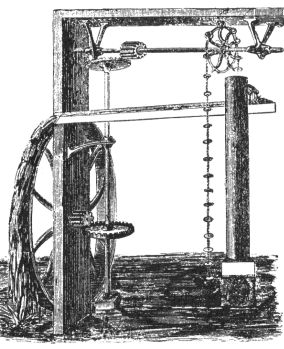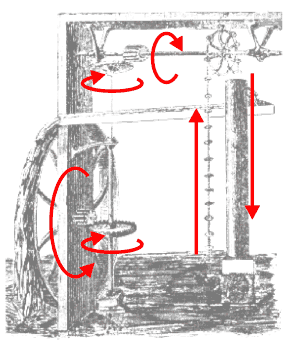Let's talk about methods. Methods in physics are often loaded with mathematics
and the overall image of this science can be rather scary to persons who
are not familiar with formal methods. The same holds for all engineering
disciplines, as engineers frequently use mathematical models to find out
about their constructions. But like other sciences, physics and engineering
sciences are not applied witchcraft, but rather a mixture of wits and formulae
when necessary.
A Simple Approach
We all know the disappointing feeling if we have a look into a university
textbook. Loaded with formulae, the facts are buried in a bunch of fancy
characters. What the whole thing is about, remains unclear. Here, I use a
different approach; an approach which should be the natural one. This could
be your checklist for analyzing a (perpetual motion) machine:
-
Don't be gullible, be sceptical.
-
Look at the known facts. Carefully look at geometry, sizes, weights, assumptions.
Are the facts complete enough for further analysis?
-
Check, if all these assumptions are plausible. Try to figure out if the data
are consistent in themselves.
-
Carefully check, if all assumptions made in the description fit into known
facts. Are there any simplifications which might have influence onto the
expected function of a concept?
-
Check, if the claimed function makes correct usage of the known principles
in physics. Are there any implicit assumptions made? Are assumptions made
which could be intended to mislead you?
-
In the first step, ignore friction, compressibilty of liquids, and relativistic
effects if possible. The classical physical approach works in that way and
produces fine results.
-
Separate the whole construction into manageable parts. It's easier to analyze
several small subsystems than a single large construction.
-
Try to find the section which could be made responsible or which is claimed
to produce the overunity behaviour. Ask yourself, why the rest of the
construction or concept is necessary if the "magic portion" may be sufficient
alone.
-
Try to avoid math as long as possible. There is no need for mathematics if
the principle of the construction is flawed and the flaw can be identified
by an elementary approach. Calculations are totally useless if they are based
on wrong assumptions.
-
Use elementary methods to get a clear understanding about the indended operation
of the device, e.g. use graphical methods for proportional relations or to
sum up force vectors.
-
Use the most simple mathematical model which seems appropriate. After having
made your calculations, carefully check them. Lay them aside and cross-check
them a few days later.
-
Leave your heavy mathematical artillery at home unless you really need it.
And if you need it, think twice before you chose the wrong gun in a hurry!
-
Ask colleagues for advice if you get stuck in your analysis. Often an idea
from another person can help solving the issue.
-
Use libraries and good internet resources. Read. And learn, learn, learn!
-
There will remain tasks which cannot be solved by the skills and knowledge
you have. This is not because you are too stupid, it is simply because you
can't know everything and you can't learn all sciences and methods in all
your lifetime. Do not worry about that. Having no simple solution is the
reason which makes science a research work and keeps engineers busy.
-
Describe your results in an unambigous, simple way. Use illustrations to
clarify your results. You will learn a lot about the methods you have used
when you try to describe your results for others.
-
For the sake of brevity and clarity do not hesitate to discard unneccessary
calculations, needless drawings or superfluous facts.
-
Let an independent researcher who works in that area check your results.
Don't be confused by all these suggestions. If you memorize the phrase "think
simple", you are on the right way. Do not use more sophisticated methods
than absolutely necessary! Sometimes a machine design will not work due to
stunningly simple reasons. Look at this example.
 |
|
 |
This recirculation mill combines an overshot water wheel with a pump,
whose type was commonly used in mining. The design looks plausible, but by
knowing about the efficiency of the water wheel and gear, we can conclude
that this machine won't work.
Remark: Ord-Hume attributes this design to Robert Fludd, but the style
of machine elements makes it more plausible that it is a machine from the
19th century, inspired by Fludd's idea. |
|
But there is a much simpler reason, why the design is flawed. Look at
the indicated directions of the rotating parts! The machine operates the
pump in the wrong direction, thus pumping water down. We learn: when analysing
mechansims, it is useful to check the kinematics first, before wasting
any further effort. |

